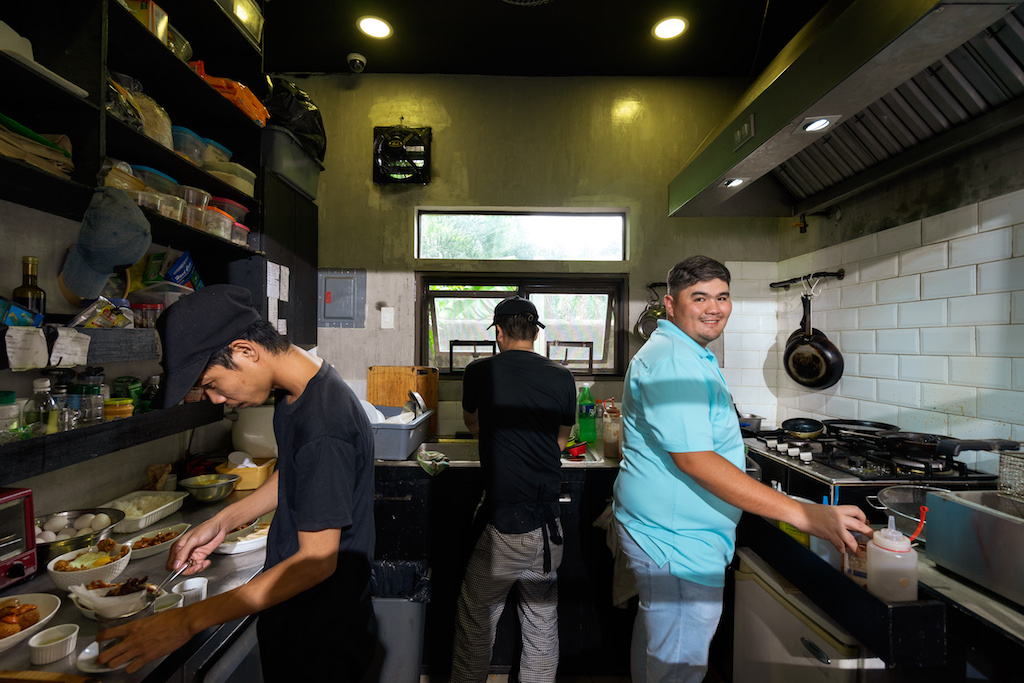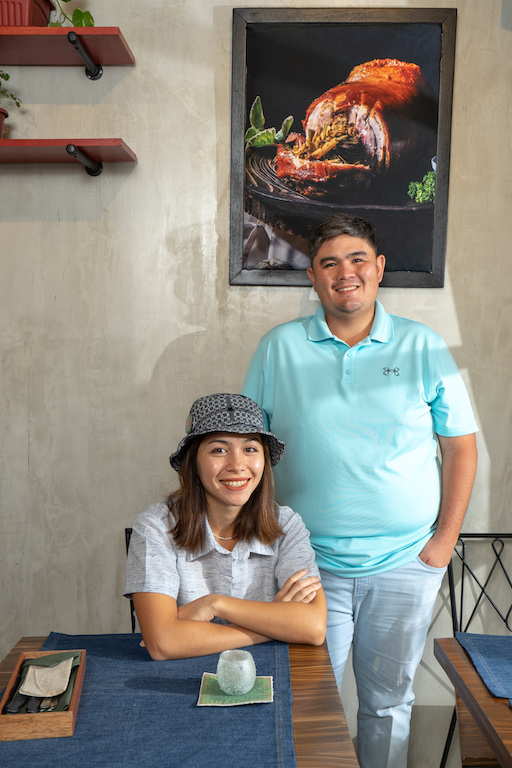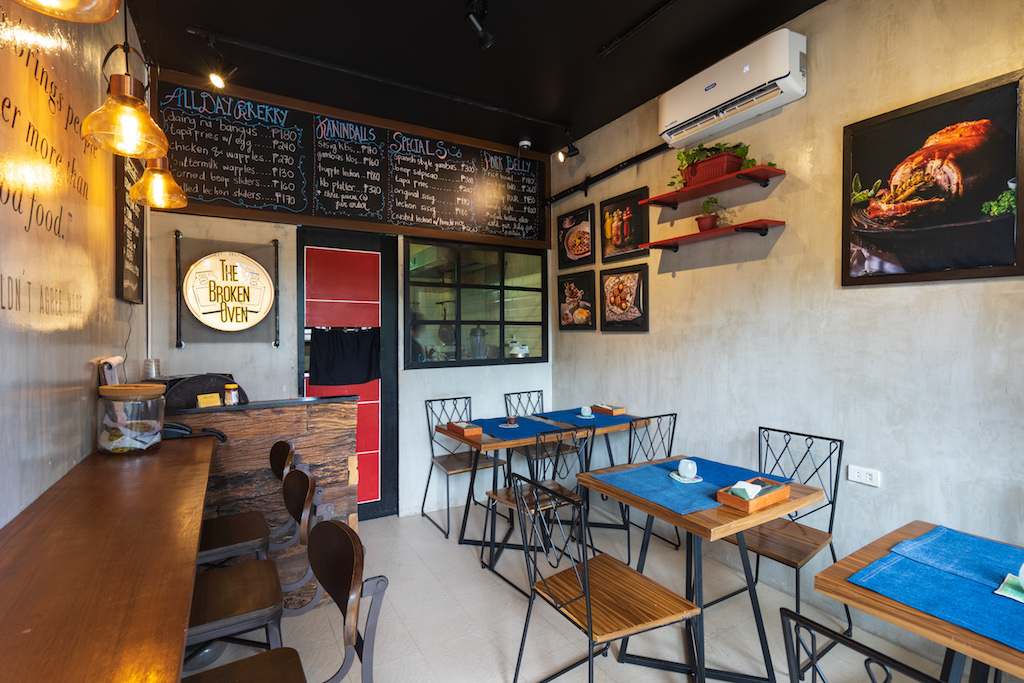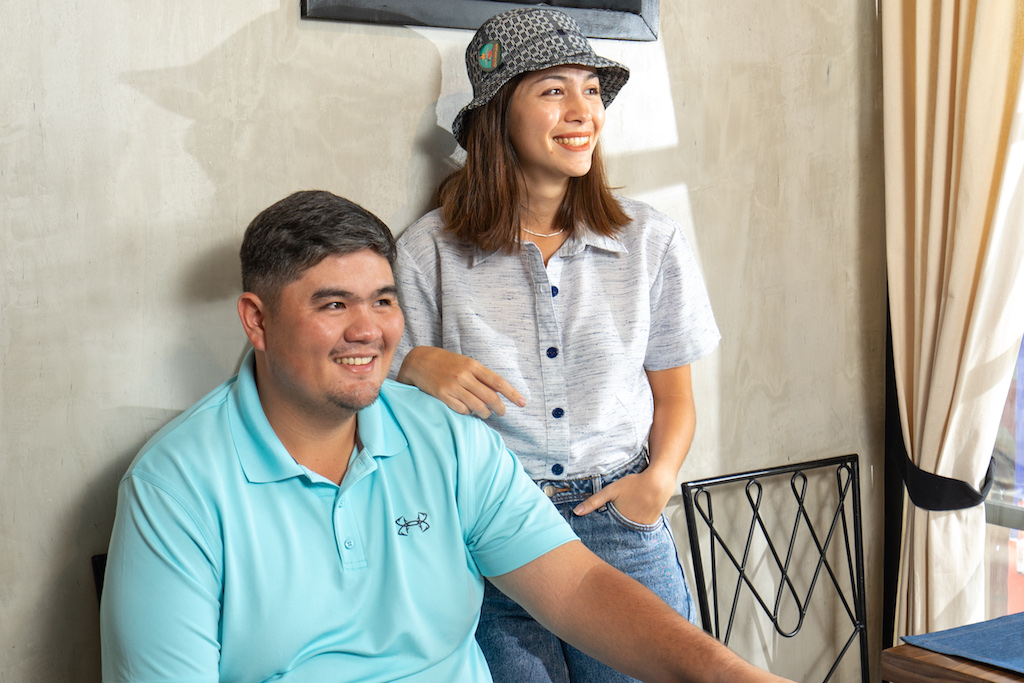There’s no better time to enter the country’s food scene than right now.
According to a 2017 report by the USDA Foreign Agricultural Service, from 2015 the increased spending and growing dining habits of the Philippines’ middle class have contributed to the sector’s growth by nearly seven percent with sales of US$12 billion (P650 billion).
For those who have a unique food concept in mind and are willing to jump into the entrepreneurial pool, the options are many. But where exactly should an aspiring restaurateur begin? Is it okay to start small or is it safer to jump straight to a brick and mortar? Are food bazaars too informal? Or are food parks just a fad?
Take it from the sibling team behind The Broken Oven, a charming family-run restaurant serving heartwarming comfort food, including what is arguably the metro’s tastiest pork belly.
The secret to their success? Patience. The Broken Oven journeyed from bazaars and food parks to their own little restaurant in a little over three years, learning that the way to the top takes time. They did enter the industry at the right moment, but they also did not take undue advantage of the market yearning for options. They stuck around and strove to succeed every step of the way—building a brand backed by experience-based insights.
How bazaar: Testing the waters

As with most food bazaar concessionaires, all Marco Olives wanted at the beginning was to turn his home-cooking hobby into a part-time gig. Armed with a slow-roasted pork belly based off his dad’s original home recipe, he signed up for a slot in the village holiday bazaar in Loyola Grand Villas in late 2015.
“It was our first ever bazaar,” recalls the 30-year-old. One weekend a month from October to December that year, Marco, together with his girlfriend, would serve their meager three-item menu to hungry residents. “And after a while, we started getting good reviews, [and then] we started getting orders for home deliveries within the village, and a few outside for friends and family.”
As word spread and more orders came, the first-time food entrepreneurs began to feel the pressure. “It was our first time to set up a food business,” says Kyla Olives, Marco’s younger sister and restaurant co-owner. “We’re used to manufacturing linens [in the family business], so we know more production-wise. But when Marco did this food business, he was learning everything for the first time: How much to buy of this? How to prepare? Who should do what?”
But aside from logistics and handling supplies, Marco’s main difficulty at the time was food costing—understanding how to properly price your product while keeping costs in mind in order to earn a profit. For restaurateurs and food concessionaires alike, performing costing correctly can make or break the business.
The Olives siblings know the value of their product, of their brand, of innovating their product and brand. And they’ve realized that championing that value sometimes requires taking on a slow and steady pace in a harrying and competitive industry.
“When I did my costing, I didn’t have anything I needed to pay,” he says. Working from the family kitchen, he had no rent, overhead costs, or other utilities to pay. “Everything was free. And I didn’t have that background in food costing before. After a while, things aligned. I learned it on the job and through studying online, talking to different chefs, and consulting with other food entrepreneurs.”
Getting a head start by joining a food bazaar proved beneficial for the inexperienced Olives siblings. They chose the correct location, made sure competition was manageable, and more than survived despite an unknown name.
A limited menu also worked to their advantage. It allowed for low investment, minimal operation requirements, and genuine interaction with their clientele. Ultimately, they got to introduce their product—a rousing hit—and got acquainted with the market that would later on become patrons.
Food parks: The park is right
Taking off from their initial success, Marco and Kyla joined two other bazaars. Their pork belly, meanwhile, gained a loyal following. Soon, people were asking if they had their own place.
But despite their growing popularity, The Broken Oven—inspired by the result of a hectic day preparing several kilos of pork belly—still couldn’t open their own space. They were hesitant. They needed investment. They needed an expanded menu. They decided to take on the next logical step, which, at that time, was to open at the Industrie Food Loft in Ortigas, Pasig City.

From a measly bazaar stall, The Broken Oven expanded to an eight-square meter space. “I thought Industrie was a stepping stone for us, and whatever happened there would determine where we’d go: Will we open a restaurant? Will we do catering? Or will we do party trays?”
Now operating seven days a week until midnight in a busy business district, the change in venue meant The Broken Oven needed to adapt as well.
First was the menu. Since the food park catered to a lot of office and call center workers, it was important to observe and understand the market to determine their needs.
“Industrie was more of a drinking place, so we had to offer a lot of pulutan and beer match items,” says Kyla. The pork belly wasn’t enough. Marco eventually innovated and came up with sisig kanin balls—the perfect hand-held snack that wraps the traditional pork delicacy in rice and deep-fries it until golden and crisp. For a market craving shareable food items to pair with their ice-cold drinks, it was the best choice.
Keeping in mind the change in their market and with arguably more freedom, Marco trooped to the kitchen and developed new menu options once more. Their chicken and waffles, beef salpicao, all-day breakfast items, and other family-friendly meals were introduced. “We kept tweaking it as we were going,” says Kyla. “And that’s one thing that Marco really does: He listens to his clients; he tries to feed everyone so they’re happy.”
And because of the change in market, they also had to adjust their pricing. With call center workers looking for cheap eats, and office workers willing to spend a bit more, they had to decide on price points that wouldn’t alienate either one. “If we go low, we get the call center market,” recalls Marco. “But when we go a little higher in price point, we lose them. It was really about finding balance.”
Several months of operations brought unforeseen difficulties, too. They had to differentiate their brand in a venue with many food concepts, fast. They played around with price points, came out with promotions, and introduced new items—in hopes of becoming the top choice for the food park’s customers. New versions of the kanin ball were rolled out, testing Marco’s mettle in the kitchen. His creativity proved advantageous, but the challenge of staying afloat remained constant.
“The food park is a good stepping stone, but don’t rely on it to really grow your business,” Kyla says. “It’s a good way to get your name out there. But if you plan to really have a successful business with longevity, treat it as a stepping stone.”
Restaurants: Space encounters
And the next step, Marco and Kyla decided, was to finally open their own brick and mortar.
In April, they opened an 18-square meter space located within Loyola Grand Villas. Before moving on from the food park, they were already looking at the village community center for expansion. “The rent was low and I was thinking of the party trays we could offer households given that we’re now located in a village,” says Marco. It was a captured market ready for a new food concept.
However, a new market also needed an appropriate menu. “If we put up here, what kind of crowd would we invite? And what were we going to do with the menu? We can’t just do bar chow and pork belly. What will the kids eat?”


Keeping in mind the change in their market and with arguably more freedom, Marco trooped to the kitchen and developed new menu options once more. Their chicken and waffles, beef salpicao, all-day breakfast items, and other family-friendly meals were introduced. “We kept tweaking it as we were going,” says Kyla. “And that’s one thing Marco really does: He listens to his clients; he tries to feed everyone so they’re happy.”
Four months since they opened their own space, The Broken Oven has become a community gathering place for the village’s residents and their families, with parents ordering out for dinner, groups coming in for meetings, and families looking for something filling in a relaxing environment. Their trademark pork belly has remained the star—along with its various equally delicious iterations—together with crowd-favorites like the kanin ball (sisig, truffle lechon, or gambas), and tapa fries.
“The food park is a good stepping stone, but don’t rely on it to really grow your business,” Kyla says. “It’s a good way to get your name out there. But if you plan to really have a successful business with longevity, treat it as a stepping stone.”
To create a space that people would want to dine in, linger, and go back to was especially important—a far cry from the busy food park environment. Beyond offering just a quick bite, The Broken Oven has grown into its role as a comfort food place. “We’re doing well here because we’re serving families. And that’s the gist of the business: These are all recipes we grew up with as a family; we know the market because the market is us.”

Every step along The Broken Oven’s journey didn’t just fall into place. While other entrepreneurs would have skipped phases and jumped to a bigger investment right away, The Broken Oven took their time, applied ample elbow grease, and learned to step back whenever needed, sans hesitation.
The Olives siblings know the value of their product, of their brand, of innovating their product and brand. And they’ve realized that championing that value sometimes requires taking on a slow and steady pace in a harrying and competitive industry.
“It’s given us the courage to do this. If you do well in a food park, it validates your business—that even with a lot of competitors, you can still survive.”
And survive, they have. Three and a half years since that fateful first weekend in the bazaar, they’re now exploring the next steps in their expansion plan.
“Maybe the next step would be a bigger space outside, a stand-alone place,” says Marco.
Originally published in F&B Report Vol. 15 No. 5





